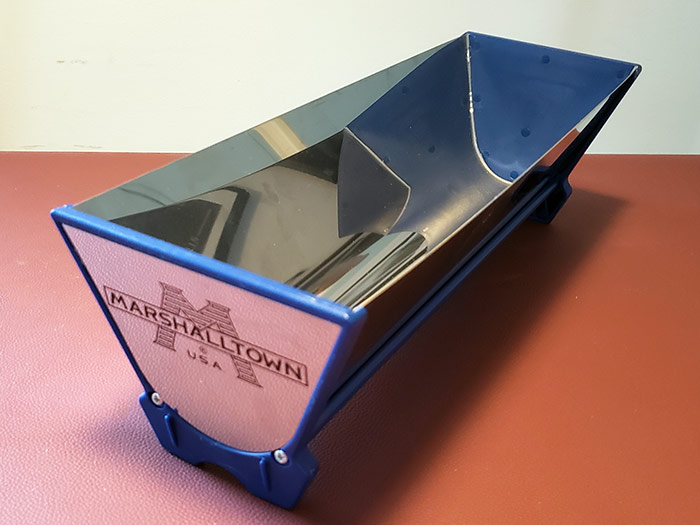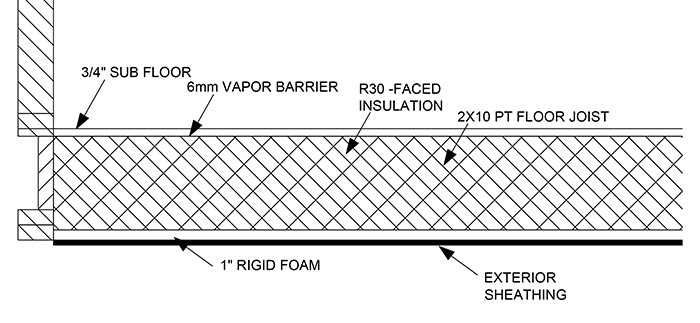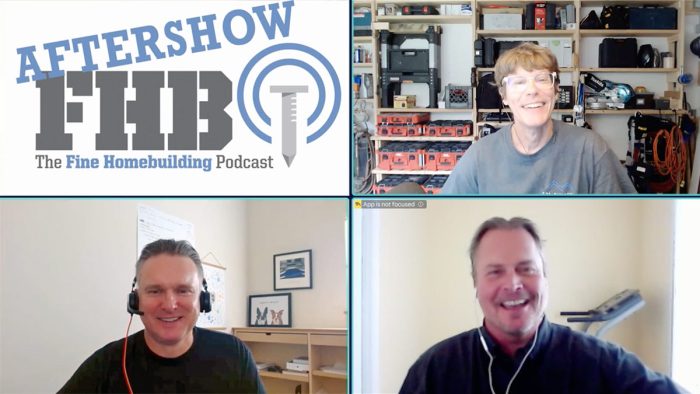Podcast 595: Raised Floor Systems, Carriage House Conversion, and LED Strip Lighting
Listeners share thoughts on condensate drains, fake shutters, and silicosis. The crew takes questions on insulating a floor system, converting a former storage building to living space, and how to use LED strip lighting.
Follow the Fine Homebuilding Podcast on your favorite app. Subscribe now and don’t miss an episode:
 |
Roberta says her first house had a disconnected condensate drain. Josh shares about a house with bogus shutters. Andy reminds us to protect our lungs. Paulet wonders about double vapor retarders in a raised floor. Chris is turning a 4500-sq.-ft. shed into his house. Tom wants more FHB content on working with LEDs.
Editor Updates:
- Ian’s weather, garden, and “nothing new after 2”
- Mark’s house: no time for projects
- Patrick’s Contract Aftershow based on Caleb’s FHB Podcast question, Drywall with new mud pan, and Pro Talk conclusion
Listener Feedback 1:
Roberta in Texas writes: Your comments about damp floors and dehumidification reminded me of my first house. It was brand new. After I first turned the air conditioner on I found that the carpet was wet. I called the builder who sent out a repairman. While waiting for him, I turned the A/C down low in an attempt to dehumidify some.
When the repairman came, he was so astounded by the problem that he showed it to me. The A/C drip line came down and ended several inches above and to one side of the drain line it was supposed to drip into. So, of course, it was dripping on the floor and seeping into the carpet. And running the A/c made it worse.
He connected the two lines and I didn’t have that problem again.
Related Links:
Listener Feedback 2:
Josh writes: FHB Podcast Crew,

Keep up the great work,
Josh
Related Links:
Listener Feedback 3:
Andy writes: This is a grim one, but it seemed important: Silicosis Among Immigrant Engineered Stone (Quartz) Countertop Fabrication Workers in California
Findings In this case study 52 engineered stone fabricator patients developed silicosis. The median age was 45 years at diagnosis, and nearly all were Latino immigrant men. Diagnosis was delayed in 58%, with 38% presenting with advanced disease (progressive massive fibrosis), and 19% died.
Meaning In California, silicosis associated with occupational exposure to dust from engineered stone primarily occurred among young Latino immigrant men; many patients presented with severe disease, and some cases were fatal.
This is a particularly high death rate. I wonder if consumer pressure might help improve safety protocols at these manufacturers. It would also be interesting to see how natural stone manufacturers compare.
Cheers,
Andy
Related Links:
Question 1: What is the proper way to insulate a floor above an unconditioned space?
Pauley from FHB Forum writes: Hi all, I have gotten some conflicting information while searching forums and some articles about the proper way to insulate a floor above an unconditioned space. I am building a 16×12 room on a pier foundation with two beams and want to insulate it well enough to use during the winter time. My layers from top down would be:
- Sub Floor
- Vapor barrier
- R-30 faced insulation
3a. 2×10 floor joist - 1″ thick rigid foam (to break thermal barrier. on bottom of floor joist)
- exterior sheathing.
The conflicting information comes from the rigid foam being used. Would this create a second vapor barrier where moisture will now be trapped between this rigid foam and the vapor barrier below my subfloor? I have attached a pdf to show the floor assembly.
Thank you,
Pauley
Related Links:
Question 2: How do you sequence replacing posts, truss elements, and joists of a sagging structure?
Chris writes: Dear FHB team,
I am a contractor who is about to embark on my most ambitious project yet – my own home. We bought a 4500sf 100-year-old post and beam constructed warehouse/glorified shed. It used to be a carriage house for the town’s ice house. The train would deliver fresh ice to the ice house at the front of the property and then the carriages would deliver it throughout the town.
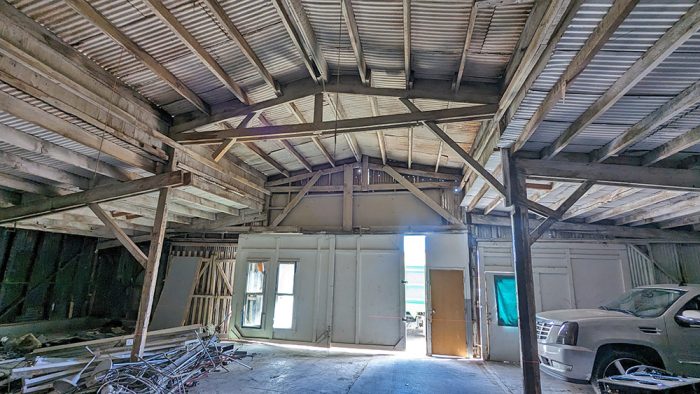 |
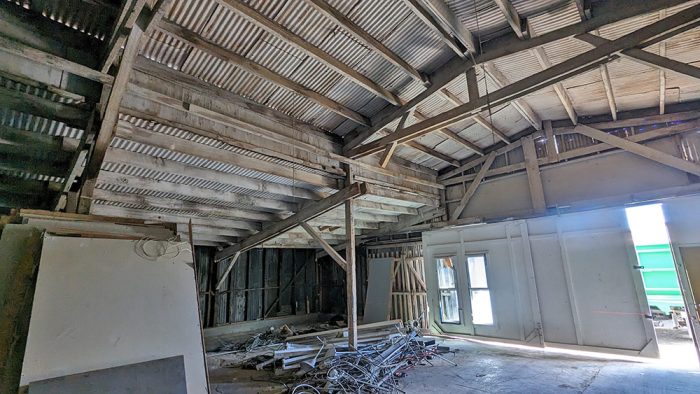 |
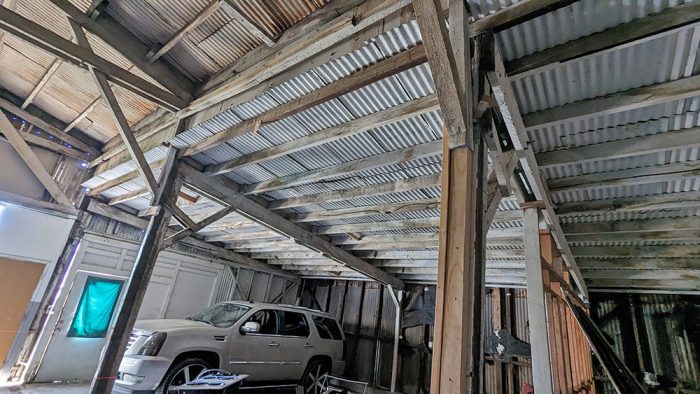 |
Our plans for it are to make it into a live/work building. Unfortunately, over the years a lot of the structure has started to sag and it needs a ton of work. I have a structural engineer who has given us plans on replacing structure as needed and spec’d out hardware and shear walls, but my biggest question is how would you sequence the shoring up and replacement of posts and truss elements and joists? We will also be pouring new footings for every single post and an entirely new slab, although the perimeter foundation will mostly be left untouched (with the exception of a couple locations that need to be filled in).
We are in the Bay Area in California so energy efficiency usually isn’t the most front of mind since it’s so mild here, but since you tend to be interested in that… We will be doing a flash and batt install in the ceiling to get the required R value. Mineral wool batts in the walls. I don’t have any special plans for air sealing or anything like that. We will not have radiant in the floor so we won’t be doing any insulation under the slab unless you think there is a significant reason to do so.
I’m sure I’ll have a million other questions as things progress. I can send more pics if you’d like.
Thanks,
Chris
Related Links:
Question 3: What are best practices for hardwired LED strip lights?
Tom writes: Hello FHB podcast,
When Apple stopped including first floppy disk drives, and then CD drives from its computers, and then took away the headphone jack from the iPhone, there was an initial shock, but then a realization that it was time to move on from those technologies. If Apple were to design a house, I am quite confident that there wouldn’t be a single medium base light socket anywhere; the possibilities with LEDs are so much more varied. But Apple doesn’t design houses, and moving beyond standard light sockets is not easy!
In response to your discussion in episode 583 about doing an article about the nuts and bolts of LED strip light installation, I say “Yes please!” I really like what LED strip lights can do, but haven’t really found a way to install them in a method that isn’t somewhat slapdash.
The first installation I’ve done, to get an effect that wouldn’t really have been possible without LEDs, is in the reach-in bedroom closet in our 1941 house. I put LED strip lights around the door trim on the interior of the closet, and the result is a bright and even light that lets us clearly see everything at all levels of the closet. I also put an under-cabinet light in the kitchen, using LED strip tape that was dense enough so that, mounted in an aluminum channel with a frosted lens, one gets an unbroken line of light.
But for these and other installations, I want the LEDs hardwired instead of plugged into a receptacle, I don’t want an inline switch on a power cord. I don’t want controllers with batteries that need to be replaced, or that rely on an app that could stop working in a few years. Dimming on the 24V DC side of the transformer, using pulse width modulation (PWM) is far superior to dimming on the AC side.
So much of what’s available seems like it’s for hobbyist projects and not permanent home installation. The world needs a comprehensive FHB article, or two or three, showing us appropriate electronics and hardware and best practices for putting it all together. Where do we locate transformers? Is it better to use one large transformer for several LED strips, or one for each installation? How do we safely and legally route the wiring for both the 120V AC and the 24V DC electricity? Are standard wall switches still the best way to turn the light on and off, or are they also a relic that we need to move beyond?
Please, help us move to the next generation of lighting design!
Related Links:
END NOTE:
Podcast 595: Members-only Aftershow — Building and Remodeling Contracts
The crew talks about generating a good contract to protect you, your business, and your client.
This episode of The Fine Homebuilding Podcast is brought to you by Loctite’s Pro Foam

The Gaps & Cracks and Window & Door items seal and insulate gaps and fit any standard foam gun applicator. Loctite’s Fire Block Pro Foam fills gaps while resisting the migration of fire and smoke. Perfect for electrical, plumbing, and wherever a fire-resistant foam is needed. Say yes to Loctite’s new Pro Foams. Say yes to Loctite.
Visit Loctiteproducts.com for more information.
Check out one of our latest Project Guides: Energy Retrofit!
Check out our FHB Houses:
Visit the Taunton Store • Magazine Index • Online Archive • Our First Issues • All Access

If you have any questions you would like us to dig into for a future show, shoot an email our way: fhbpodcast@taunton.com.
If we use your question we’ll send you a FHB Podcast sticker!
FHB Podcast T-shirts!
Represent your favorite podcast! Available in several styles and colors. Made from 100% cotton. Find the Podcast t-shirt and more cool products in the Fine Homebuilding Store.
| Fine Homebuilding podcast listeners can now get 20% off anything in the Taunton store, including Pretty Good House.
Use the discount code FHBPODCAST to take advantage of this special offer. |
 |
“Finally, knowledgeable people talking about building reasonably-sized, high-performance houses for normal people with real budgets!” — DanD, VA, 8/19/22, Amazon.com review |
We hope you will take advantage of a great offer for our podcast listeners: A special 20% off the discounted rate to subscribe to the Fine Homebuilding print magazine. That link goes to finehomebuilding.com/podoffer.
The show is driven by our listeners, so please subscribe and rate us on iTunes or Google Play, and if you have any questions you would like us to dig into for a future show, shoot an email our way: fhbpodcast@taunton.com. Also, be sure to follow Fine Homebuilding on Instagram, and “like” us on Facebook. Note that you can watch the show above, or on YouTube at the Fine Homebuilding YouTube Channel.
The Fine Homebuilding Podcast embodies Fine Homebuilding magazine’s commitment to the preservation of craftsmanship and the advancement of home performance in residential construction. The show is an informal but vigorous conversation about the techniques and principles that allow listeners to master their design and building challenges.
Other related links
-
- All FHB podcast show notes: FineHomebuilding.com/podcast.
- #KeepCraftAlive T-shirts and hats support scholarships for building trades students. So order some gear at KeepCraftAlive.org.
- The direct link to the online store is here.
